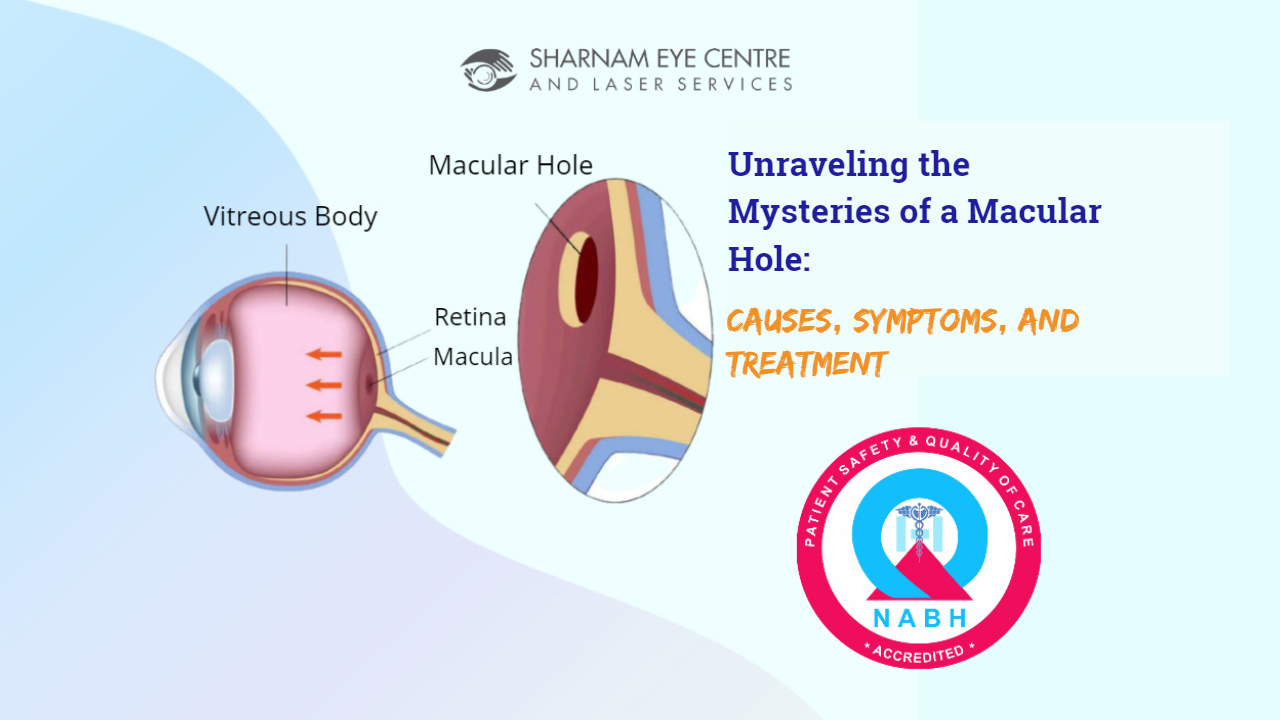Understanding a Macular Hole:
A macular hole is a small break that develops in the macula, the central section of the retina responsible for sharp, detailed vision that we use for tasks such as reading, driving, and face recognition. This condition can trigger blurry and distorted vision, typically in one eye.
Delineating the Causes of a Macular Hole:
Although the precise cause of a macular hole remains elusive, its prevalence tends to increase in individuals above 60 years of age, suggesting an association with natural aging processes. Macular holes can also be triggered by trauma, certain eye diseases, or vitreomacular traction, a condition where the vitreous gel tugs on the macula.
Identifying Early Signs of a Macular Hole:
Early warning signs of a macular hole can vary in severity and encompass:
- Blurry or distorted central vision: Straight lines may seem bent, and there might be a noticeable decrease in the sharpness of your central vision.
- A blind or dark spot: You could encounter a blind spot or a dark area in your visual field’s center, which can complicate tasks like reading, face recognition, and any activity necessitating clear central vision.
- Declining central vision: You might perceive a gradual or abrupt decline in your ability to see fine details or accomplish tasks demanding focused central vision.
- Visual disturbances: Macular hole patients might also experience flashes of light or floaters in the affected eye.
Please remember these symptoms can vary and may affect one or both eyes. If you experience any of these signs, promptly consult an eye care professional for a thorough evaluation and diagnosis.
Treatment Options for Macular Hole:
The primary approach to treating a macular hole is surgical intervention. A commonly employed technique include:
- Vitrectomy: This procedure involves removing the vitreous gel from the eye’s center and substituting it with a gas bubble or silicone oil. This bubble or oil aids in sealing the macular hole and facilitating the healing process. Eventually, the eye naturally absorbs this bubble but oil needs removal.
- Internal limiting membrane (ILM) peeling: This technique, used during vitrectomy, entails delicately peeling off the thin membrane covering the macula. ILM peeling has proven to enhance the success rate of macular hole closure.
- Face-down positioning: Post vitrectomy, patients are generally instructed to maintain a face-down position for several days or weeks. This posture allows the gas bubble or oil to apply pressure to the macular hole, promoting healing and closure.
Success rates for macular hole surgery vary, with factors such as the hole’s size and duration, along with the eye’s overall health, playing a significant role. In general, surgery outcomes are positive, with most patients reporting improved vision.
Prompt diagnosis and treatment are paramount for securing the best possible results. Therefore, if you suspect a macular hole or observe any changes in your vision, consult an ophthalmologist for a thorough evaluation and appropriate treatment.
If you found this article informative, don’t hesitate to share it with your friends, family, and followers



